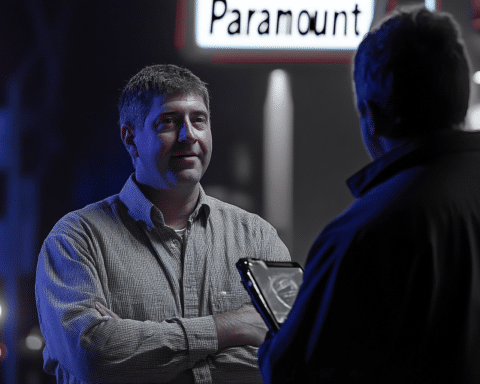National Amusements halted merger discussions between Paramount Global and Skydance this week, raising questions about the media giant’s future. With the industry facing significant challenges, Paramount’s leadership must now navigate a path forward.
Leadership Transition and Strategic Focus
Bob Bakish stepped down as CEO in April, replaced by the “Office of the CEO,” consisting of CBS CEO George Cheeks, Paramount Media Networks CEO Chris McCarthy, and Paramount Pictures CEO Brian Robbins. This unique leadership structure aims to steer Paramount through a challenging period. Analyst Jessica Reif-Ehrlich noted, “It’s tough for a trio of CEOs to work on a long-term basis. It’s almost unheard of. How will they make decisions on allocating capital and strategic priorities?”
In a memo to employees, the leadership trio emphasized their commitment to the company’s strategic plan: “While the Board will always remain open to exploring strategic alternatives that create value for shareholders, we continue to focus on executing the strategic plan we unveiled last week during the Annual Shareholder Meeting, which we are confident will set the stage for growth for Paramount.”
The Skydance Deal Collapse
After months of negotiations, National Amusements abruptly halted the sale process just before a vote despite agreeing to economic terms with Skydance. The proposed merger, valued at $8 billion, would have seen significant financial shifts, but ultimately, disagreements on specific terms led to its dissolution. A source revealed, “Redstone turned down the offer after Skydance lowered the amount of money she would receive with the altered bid.”
Despite conflicting reasons for the deal’s failure, National Amusements supported Paramount’s current leadership. Other potential bidders, including Apollo Global Management and Sony, have emerged, but their plans differ significantly from Redstone’s vision for Paramount.
Paramount’s Path Forward
Facing industry uncertainty, Paramount’s Office of the CEO acknowledged the difficulties ahead. “We recognize that the last several months have not been easy as we manage through ongoing change and speculation,” the leadership stated. Paramount’s strategic priorities include exploring streaming joint ventures, eliminating $500 million in costs, and divesting non-core assets to reduce debt.
The leadership memo highlighted the focus on three pillars: transforming the streaming strategy, streamlining operations, and optimizing the asset mix. With $14.6 billion in debt, these measures aim to return Paramount to investment-grade status. “Work is already underway as we focus on these pillars to ensure the company’s growth and stability,” the leaders stated.
Challenges and Industry Outlook
Industry analysts remain skeptical about the success of Paramount’s unorthodox CEO office. “The company needs to focus on fixing the balance sheet and possibly selling assets,” said Reif-Ehrlich. Robert Fishman, an analyst at MoffettNathanson, emphasized the challenges Paramount faces, particularly with its traditional TV networks and a weak advertising market.
Despite these challenges, the leadership remains optimistic about its strategic plan, focusing on content growth, cost reduction, and debt management. As the media landscape evolves, Paramount’s ability to adapt and implement its strategy will be crucial for its future success.
With the Skydance deal off the table, Paramount must navigate a complex media landscape under a unique leadership structure. The company’s focus on strategic priorities and financial stability will be essential to overcome industry challenges and drive growth in the coming years.




